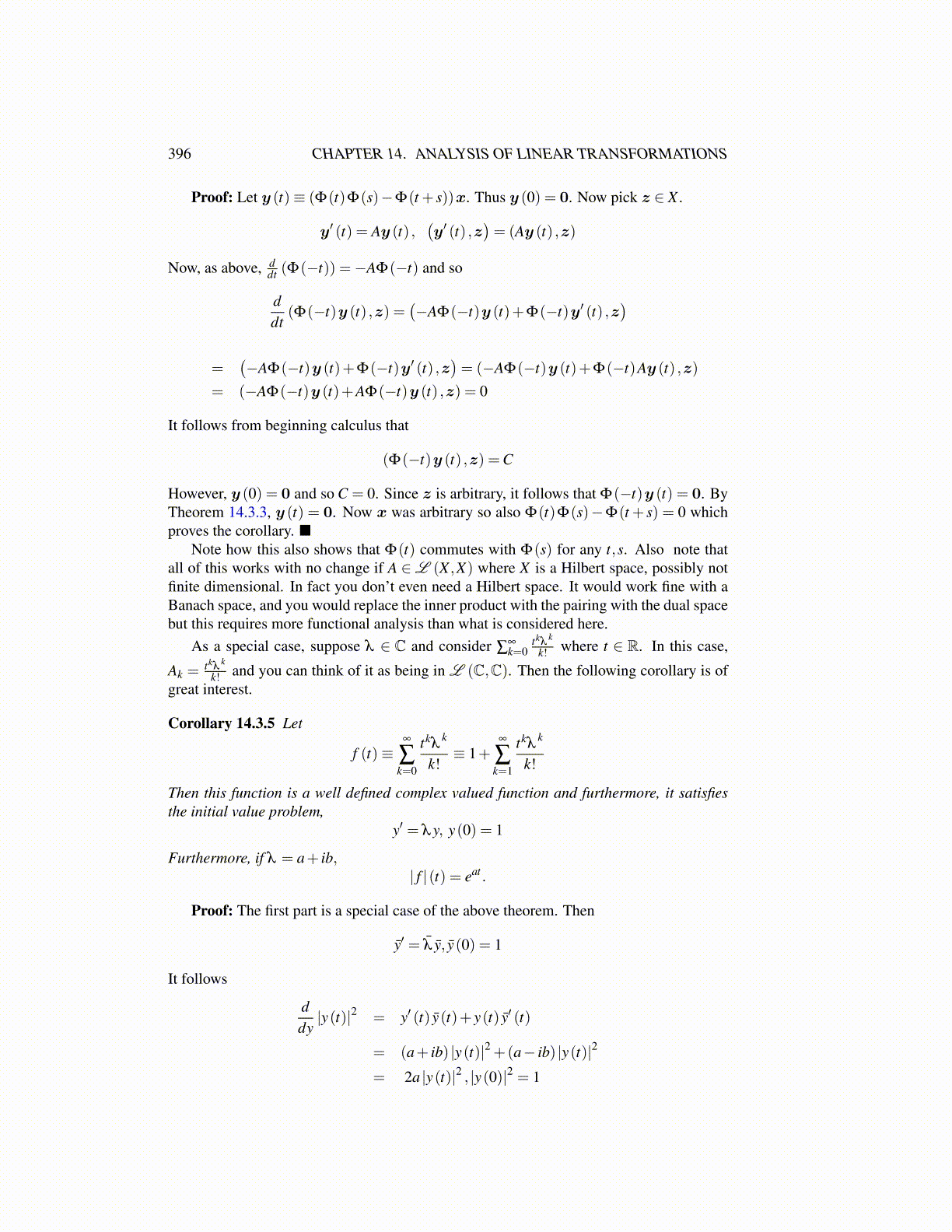
396 CHAPTER 14. ANALYSIS OF LINEAR TRANSFORMATIONS
Proof: Let y (t)≡ (Φ(t)Φ(s)−Φ(t + s))x. Thus y (0) = 0. Now pick z ∈ X .
y′ (t) = Ay (t) ,(y′ (t) ,z
)= (Ay (t) ,z)
Now, as above, ddt (Φ(−t)) =−AΦ(−t) and so
ddt
(Φ(−t)y (t) ,z) =(−AΦ(−t)y (t)+Φ(−t)y′ (t) ,z
)=
(−AΦ(−t)y (t)+Φ(−t)y′ (t) ,z
)= (−AΦ(−t)y (t)+Φ(−t)Ay (t) ,z)
= (−AΦ(−t)y (t)+AΦ(−t)y (t) ,z) = 0
It follows from beginning calculus that
(Φ(−t)y (t) ,z) =C
However, y (0) = 0 and so C = 0. Since z is arbitrary, it follows that Φ(−t)y (t) = 0. ByTheorem 14.3.3, y (t) = 0. Now x was arbitrary so also Φ(t)Φ(s)−Φ(t + s) = 0 whichproves the corollary. ■
Note how this also shows that Φ(t) commutes with Φ(s) for any t,s. Also note thatall of this works with no change if A ∈L (X ,X) where X is a Hilbert space, possibly notfinite dimensional. In fact you don’t even need a Hilbert space. It would work fine with aBanach space, and you would replace the inner product with the pairing with the dual spacebut this requires more functional analysis than what is considered here.
As a special case, suppose λ ∈ C and consider ∑∞k=0
tkλk
k! where t ∈ R. In this case,
Ak =tkλ
k
k! and you can think of it as being in L (C,C). Then the following corollary is ofgreat interest.
Corollary 14.3.5 Let
f (t)≡∞
∑k=0
tkλk
k!≡ 1+
∞
∑k=1
tkλk
k!
Then this function is a well defined complex valued function and furthermore, it satisfiesthe initial value problem,
y′ = λy, y(0) = 1
Furthermore, if λ = a+ ib,| f |(t) = eat .
Proof: The first part is a special case of the above theorem. Then
ȳ′ = λ̄ ȳ, ȳ(0) = 1
It follows
ddy|y(t)|2 = y′ (t) ȳ(t)+ y(t) ȳ′ (t)
= (a+ ib) |y(t)|2 +(a− ib) |y(t)|2
= 2a |y(t)|2 , |y(0)|2 = 1